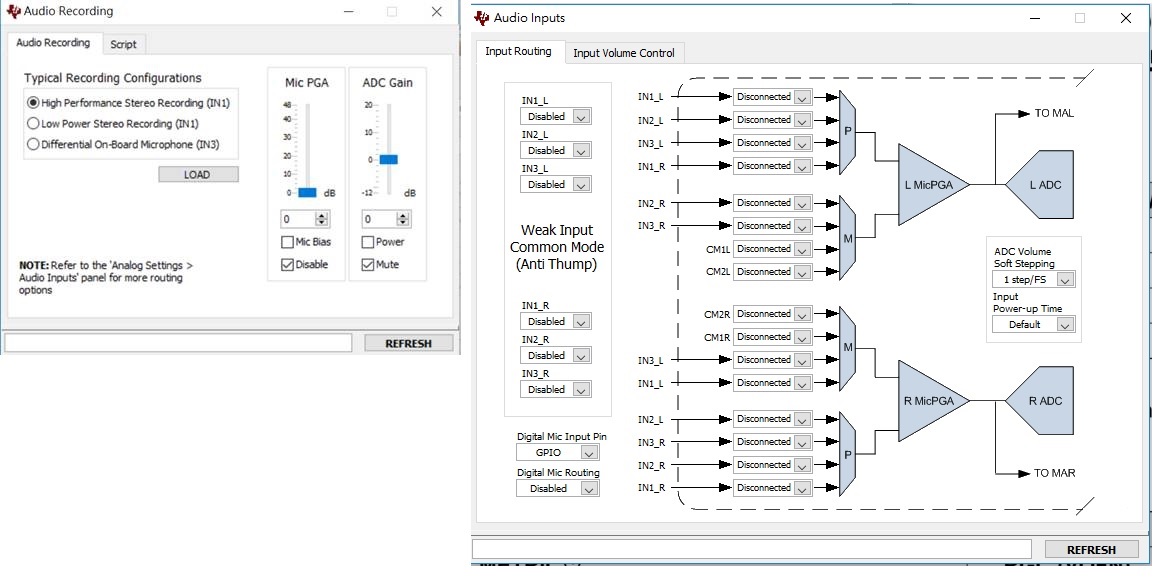Hello, TI Experts,
Our customer sent us a question about TLV320AIC3204's IN1 channel cannot input the input signal.
We have done these tests:
1.delet the components connected to the IN1 Channel, not make sense
2. set the gain between input to ADC to 0dB,then analyse the ADC‘s data by recording on customer's computer,we found ADC's output I2S is strange.Its DC reference level is not 0V,but offset to the negative end.
When set the PGA gain to 0dB,dc offset is -48dBV(around 4mV);Then increase PGA gain,The reference signal move downward;
When set the PGA gain to the max 47.5dB,the signal reference will be -24dBV(around 0.06V)
3. We change the channel to IN2/IN3,the offset is much smaller.
The Question Is:
Why is IN1 different from IN2/IN3?
Our Customer has designed to use IN1,if change to IN2/IN3,It may spend much more time to redesign.
Do we have any methods to solve the IN1 problem?
Look foward to your kindly reply,Thank you ~~



